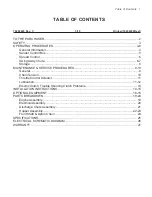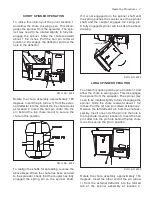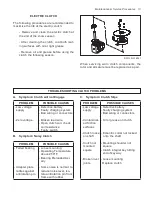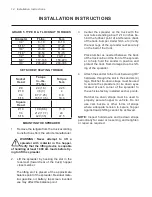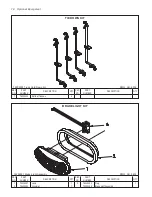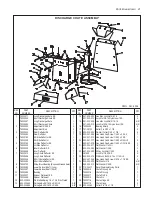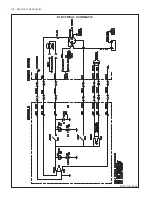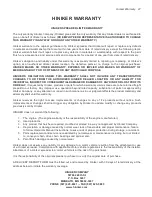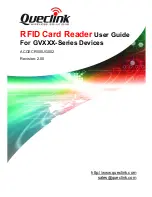
Maintenance & Service Procedures 13
ELECTRIC CLUTCH
The following procedures are recommended to
maximize the life of the electric clutch:
- Remove and clean the electric clutch at
the end of the snow season.
- After cleaning the clutch, coat both mat-
ing surfaces with oil or light grease.
- Remove oil and grease before using the
clutch the following season.
DWG. NO. 6041
When servicing worn clutch components, the
rotor and armature must be replaced as a pair.
TROUBLESHOOTING CLUTCH PROBLEMS
A. Symptom: Clutch will not Engage
PROBLEM
POSSIBLE CAUSES
- Low voltage
supply
- Zero voltage
- Defective battery
- Faulty charging system
- Bad wiring or connectors
- Broken lead wire
- Open clutch coil, check
coil resistance
- Faulty switch
B. Symptom: Noisy Clutch
PROBLEM
POSSIBLE CAUSES
- Failed bearing
- Adapter plate
rattles against
antirotation pin
- Loose mounting
- Operating Temperature
above 250
O
F
- Bearing Preloaded Axi-
ally
- Some noise is normal: to
reduce noise level, iso-
late antirotation pin from
frame with rubber.
C. Symptom: Clutch Slips
PROBLEM
POSSIBLE CAUSES
- Low voltage
supply
- Contaminat-
ed friction
surfaces
- Clutch loose
on shaft
- Clutch not
mounted
square
- Broken rivet
joints
- Defective battery
- Faulty charging system
- Bad wiring or connectors
- Oil or grease on clutch
- Eccentric collar not locked
onto the shaft
- Mounting shoulder not
square
- Clutch integral key hitting
end of keyway
- Loose mounting
Replace clutch



